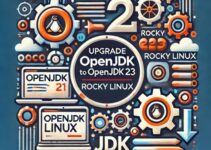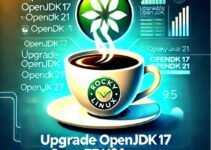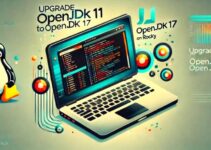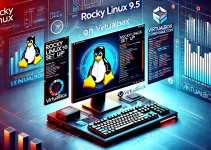VirtualBox snapshots are a game-changing feature for developers, system administrators, and tech enthusiasts. They offer an efficient way to save the current state of your virtual machines, providing a safety net for experimentation and testing. In this blog, we’ll dive deep into managing VirtualBox Snapshots on Rocky Linux.
For a visual guide, watch our step-by-step…
What Are VirtualBox Snapshots on Rocky Linux?
A snapshot is essentially a frozen state of your virtual machine (VM) at a specific moment in time. It captures your operating system, applications, files, and configurations, allowing you to revert to this state whenever needed. Managing VirtualBox Snapshots on Rocky Linux is invaluable when testing new setups or software.
How to Create VirtualBox Snapshots on Rocky Linux
Creating a snapshot in VirtualBox is simple:
- Launch VirtualBox and select your desired VM.
- Navigate to the Snapshots tab.
- Click on the “Take Snapshot” button or right-click and select “Take Snapshot” from the menu.
- Provide a meaningful name, such as “Before System Update,” and an optional description.
Pro Tip: Always use descriptive names to quickly identify snapshots later.
Restoring VirtualBox Snapshots on Rocky Linux
If something goes wrong during your experiment or setup, restoring a snapshot can save the day:
- Go to the Snapshots tab in VirtualBox.
- Right-click on the desired snapshot and choose “Restore.”
- VirtualBox will revert the VM to the saved state instantly.
This feature is particularly useful for recovering from system instability or failed test setups.
Deleting VirtualBox Snapshots on Rocky Linux
Snapshots can take up significant disk space over time. Deleting unused snapshots is crucial for maintaining optimal performance:
- Open the Snapshots tab.
- Right-click the snapshot you wish to delete and select “Delete.”
- VirtualBox will merge the changes into the current state and free up space.
Warning: Deleted snapshots cannot be recovered. Double-check their importance before removing them.
Best Practices for Managing VirtualBox Snapshots on Rocky Linux
To get the most out of VirtualBox Snapshots on Rocky Linux, follow these tips:
- Limit the Number of Snapshots: Excessive snapshots can degrade performance and consume storage.
- Use Snapshots as Temporary Solutions: Snapshots are not substitutes for full backups. Use additional backup methods for long-term safety.
- Organize Your Snapshots: Give them meaningful names and add descriptions to make them easier to manage.
FAQs About VirtualBox Snapshots on Rocky Linux
1. What happens to data created after taking a snapshot?
Data created after a snapshot remains unaffected when you restore the snapshot, as the VM reverts to the state at the time of creation.
2. Can VirtualBox Snapshots on Rocky Linux be transferred between systems?
Yes, snapshots can be transferred by exporting the VM. However, ensure the VirtualBox versions are compatible.
3. Are VirtualBox Snapshots on Rocky Linux suitable for production environments?
Snapshots are better suited for testing and development. Use robust backup solutions for production.
4. How much disk space do snapshots require?
Snapshot size depends on the changes made after its creation. Regularly delete unused snapshots to save space.
5. Can I automate VirtualBox Snapshots on Rocky Linux?
Yes, you can automate snapshots using VirtualBox’s command-line tools or scripting.
Conclusion
VirtualBox Snapshots on Rocky Linux are an essential tool for anyone working with virtual machines. They simplify testing and provide a reliable rollback mechanism. In this blog, we explored:
- What VirtualBox Snapshots on Rocky Linux are and why they’re useful.
- The process of creating, restoring, and deleting snapshots.
- Best practices for managing snapshots effectively.
For a step-by-step walkthrough, watch our video tutorial. Don’t forget to experiment and leverage snapshots for a smoother virtualization experience!









